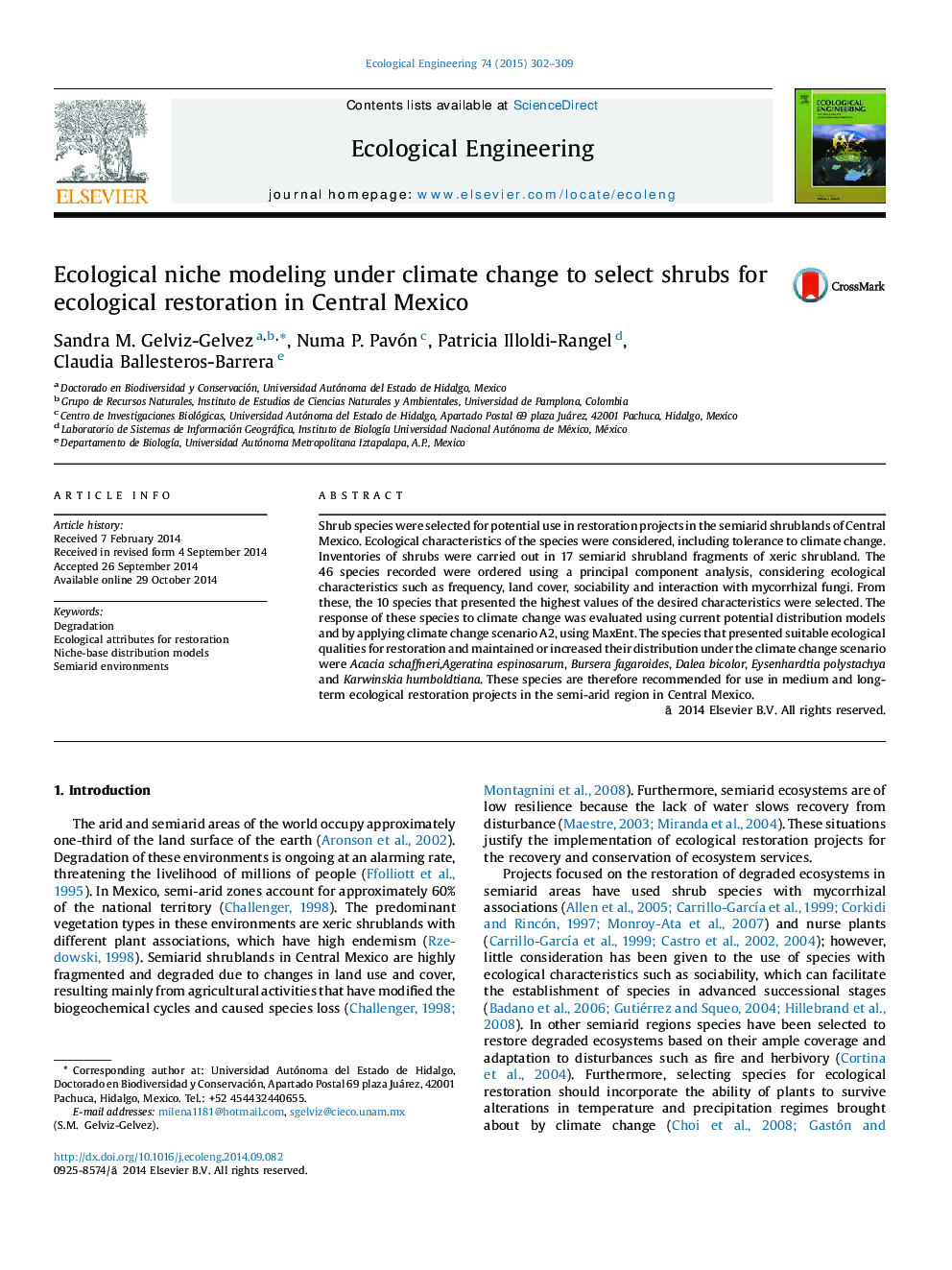| Article ID | Journal | Published Year | Pages | File Type |
|---|---|---|---|---|
| 4389320 | Ecological Engineering | 2015 | 8 Pages |
Shrub species were selected for potential use in restoration projects in the semiarid shrublands of Central Mexico. Ecological characteristics of the species were considered, including tolerance to climate change. Inventories of shrubs were carried out in 17 semiarid shrubland fragments of xeric shrubland. The 46 species recorded were ordered using a principal component analysis, considering ecological characteristics such as frequency, land cover, sociability and interaction with mycorrhizal fungi. From these, the 10 species that presented the highest values of the desired characteristics were selected. The response of these species to climate change was evaluated using current potential distribution models and by applying climate change scenario A2, using MaxEnt. The species that presented suitable ecological qualities for restoration and maintained or increased their distribution under the climate change scenario were Acacia schaffneri, Ageratina espinosarum, Bursera fagaroides, Dalea bicolor, Eysenhardtia polystachya and Karwinskia humboldtiana. These species are therefore recommended for use in medium and long-term ecological restoration projects in the semi-arid region in Central Mexico.
